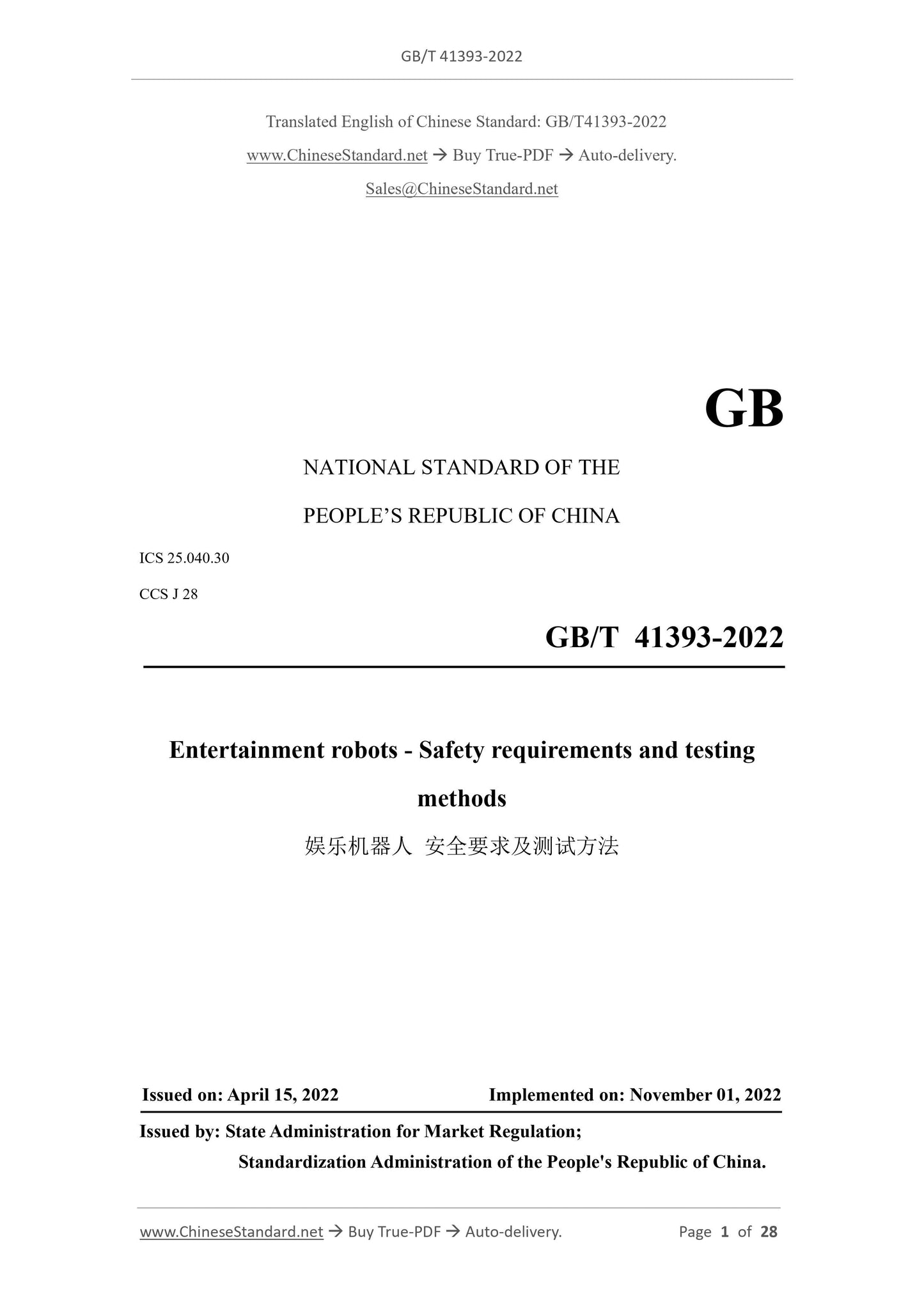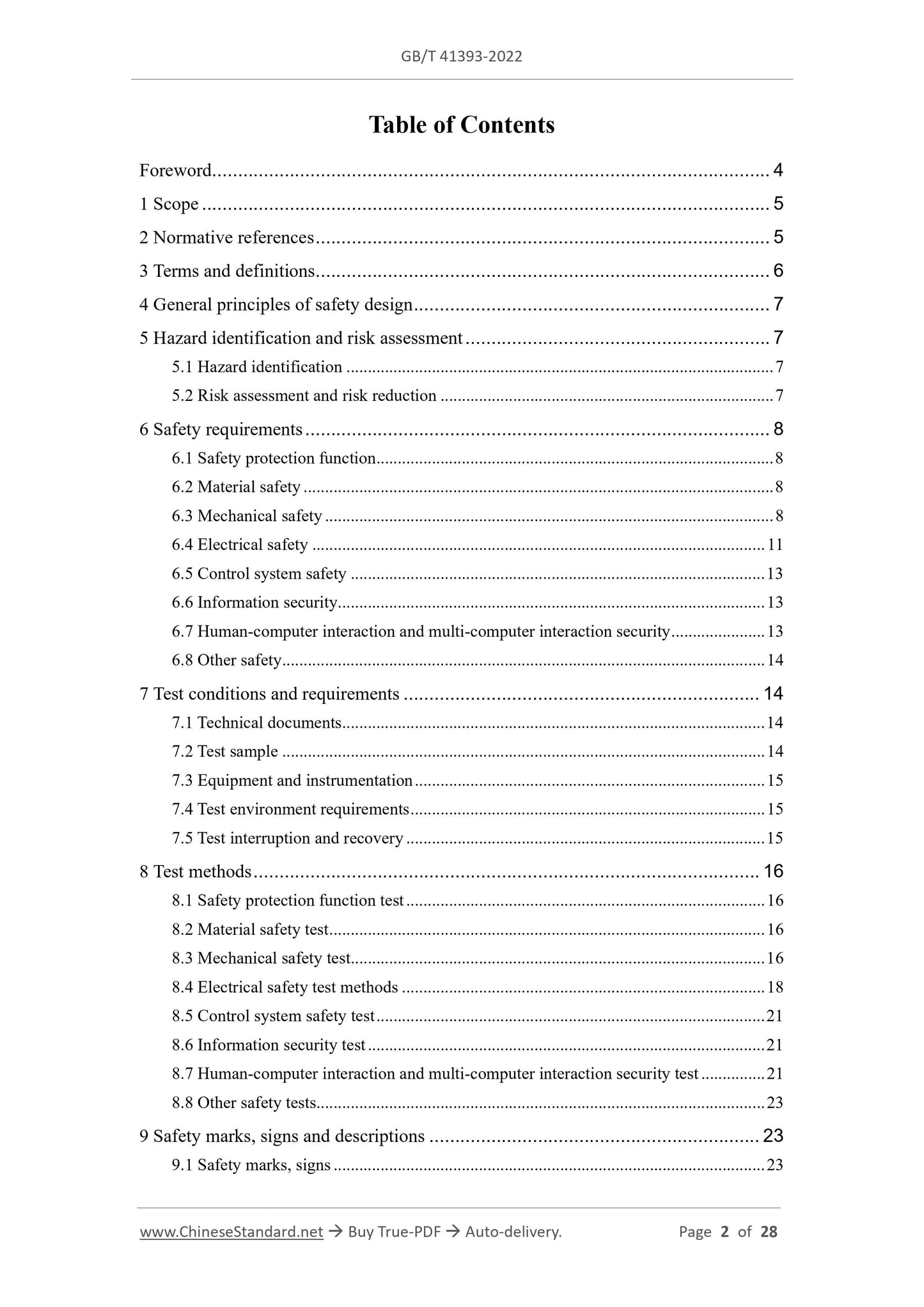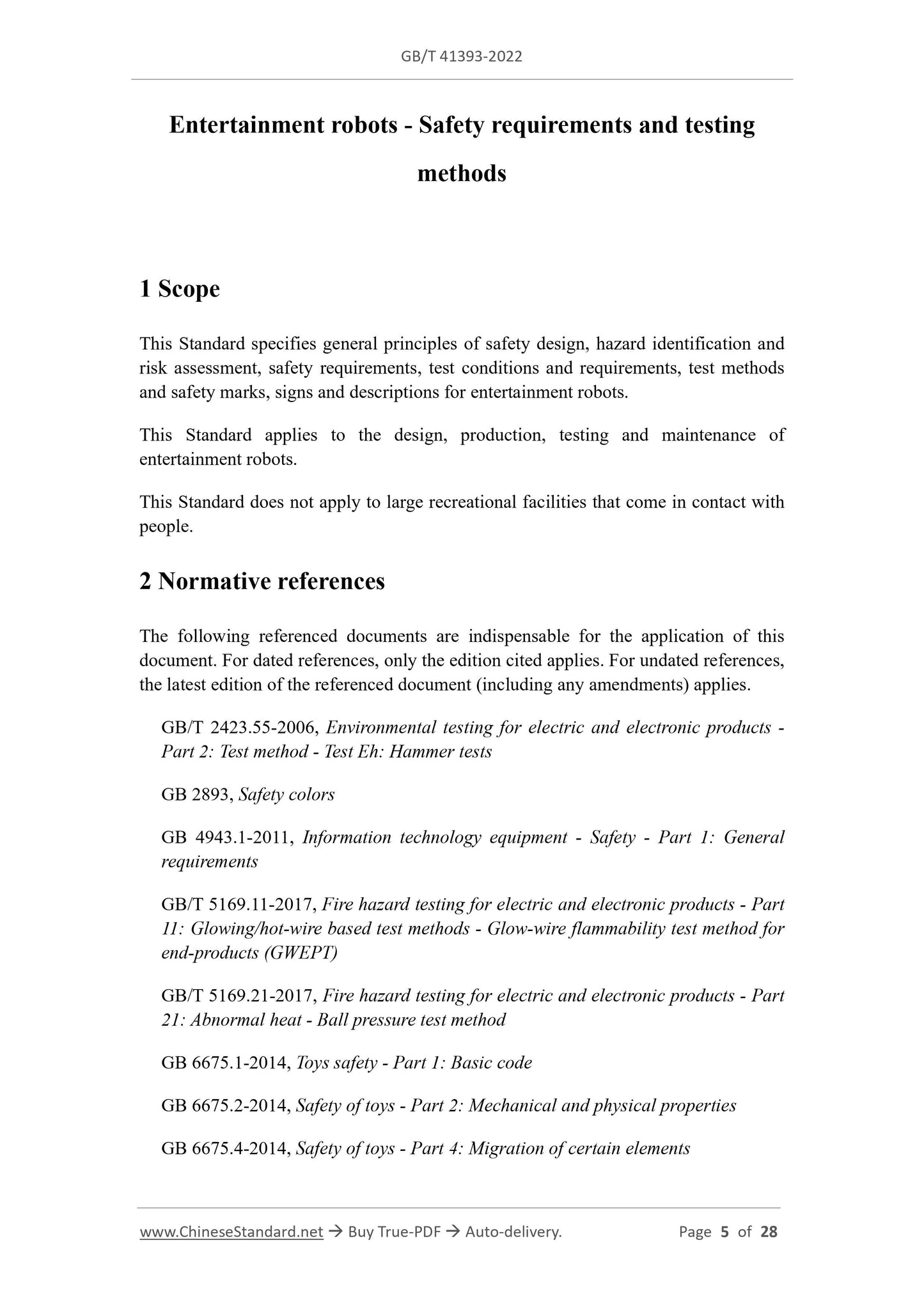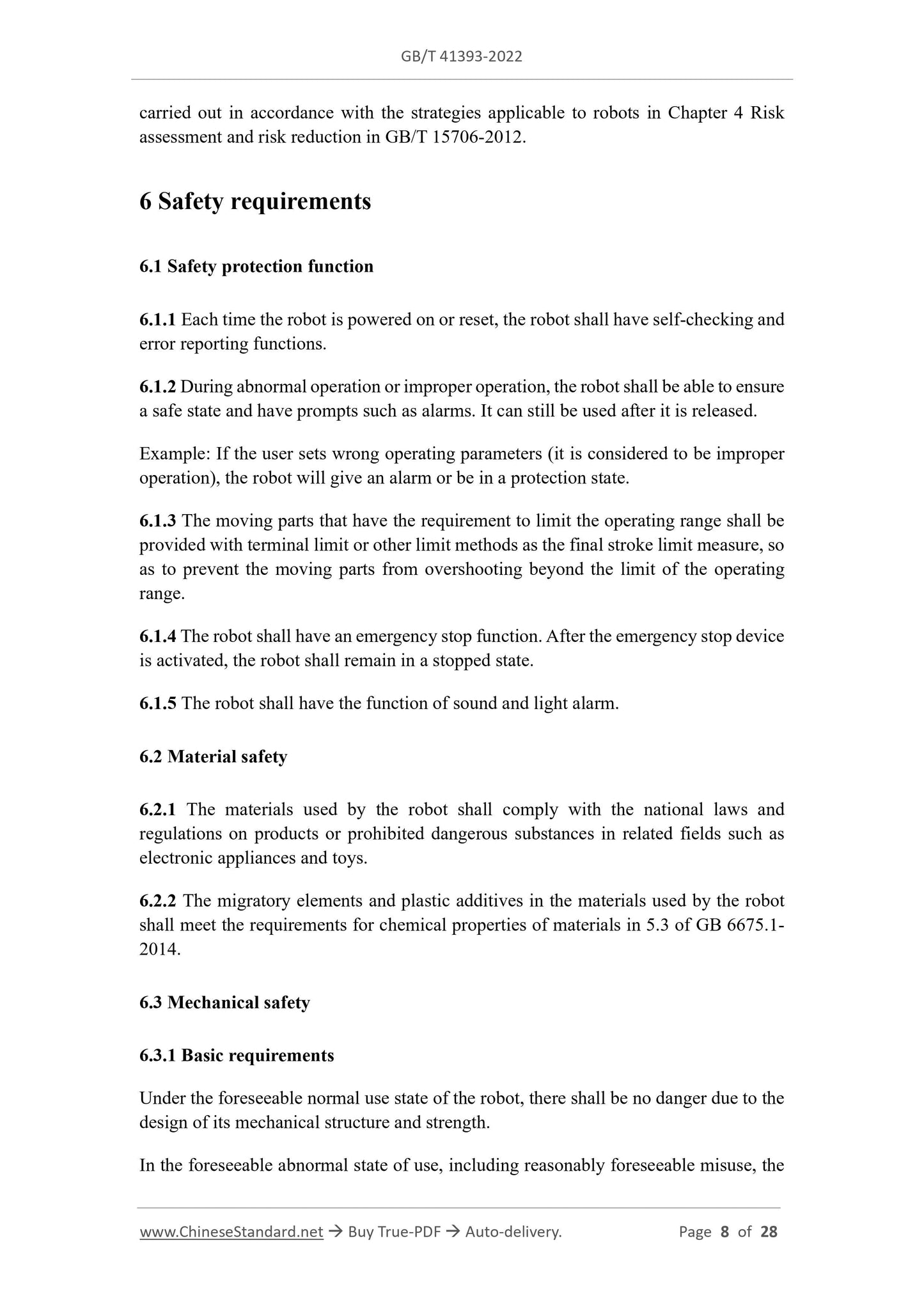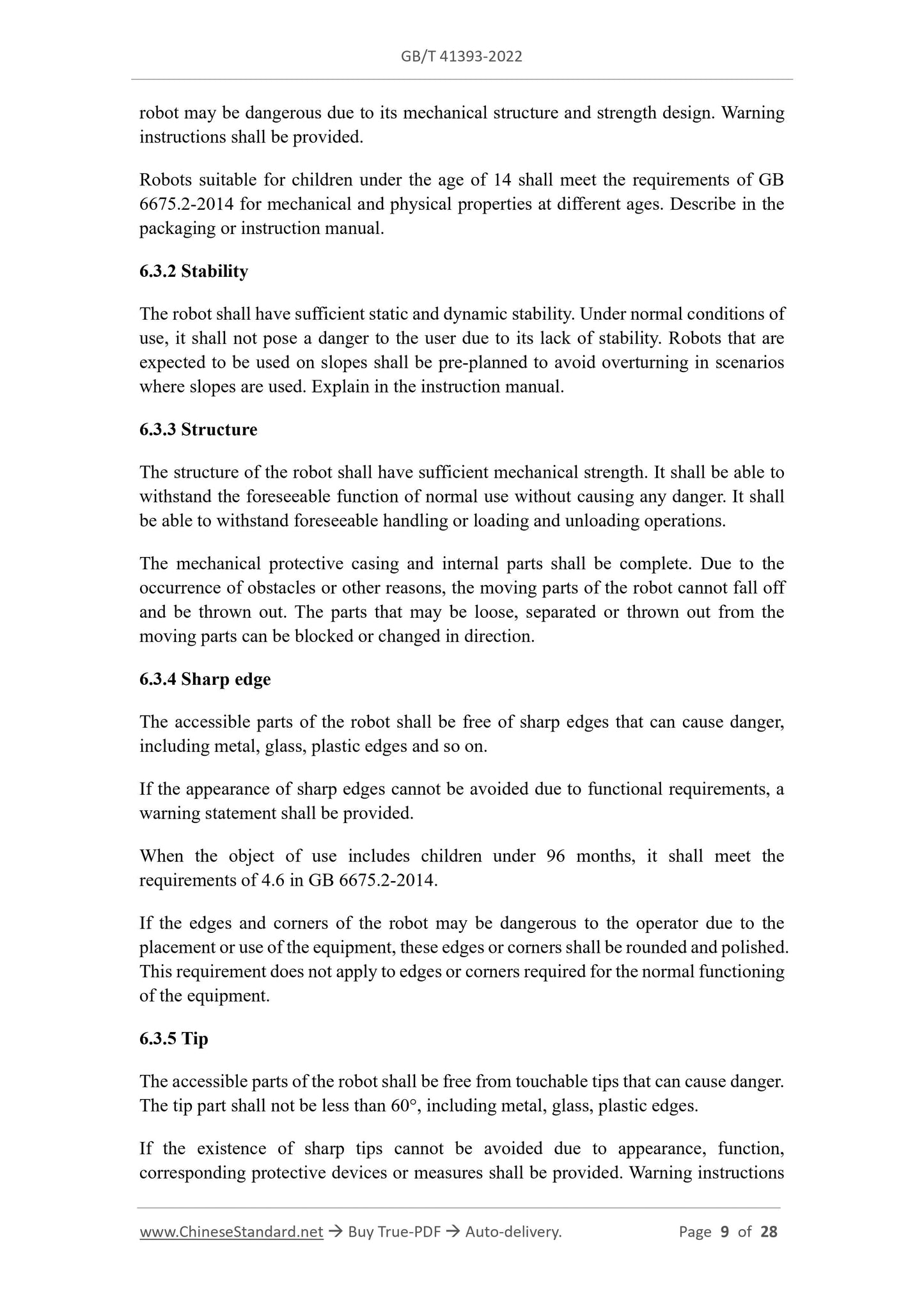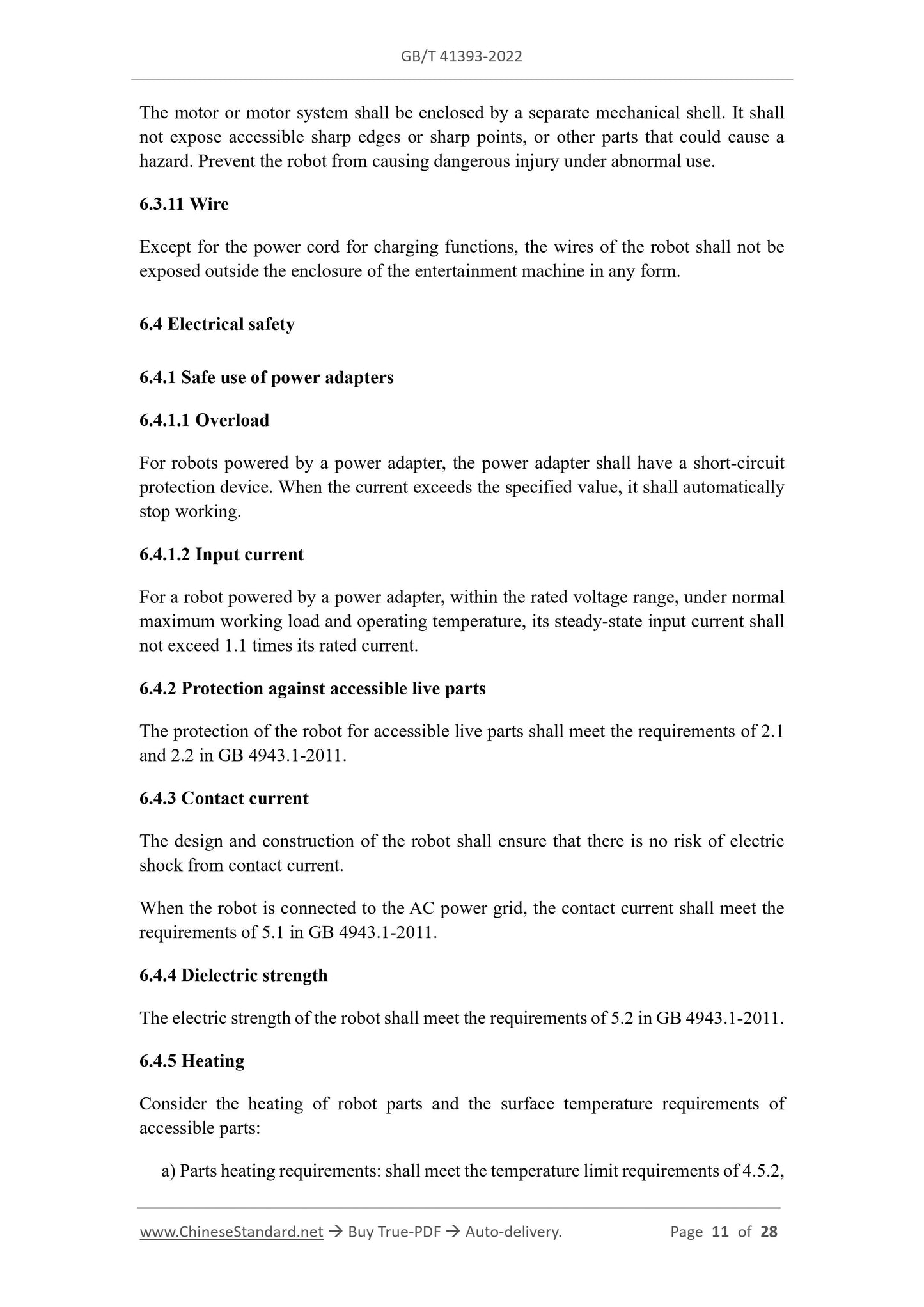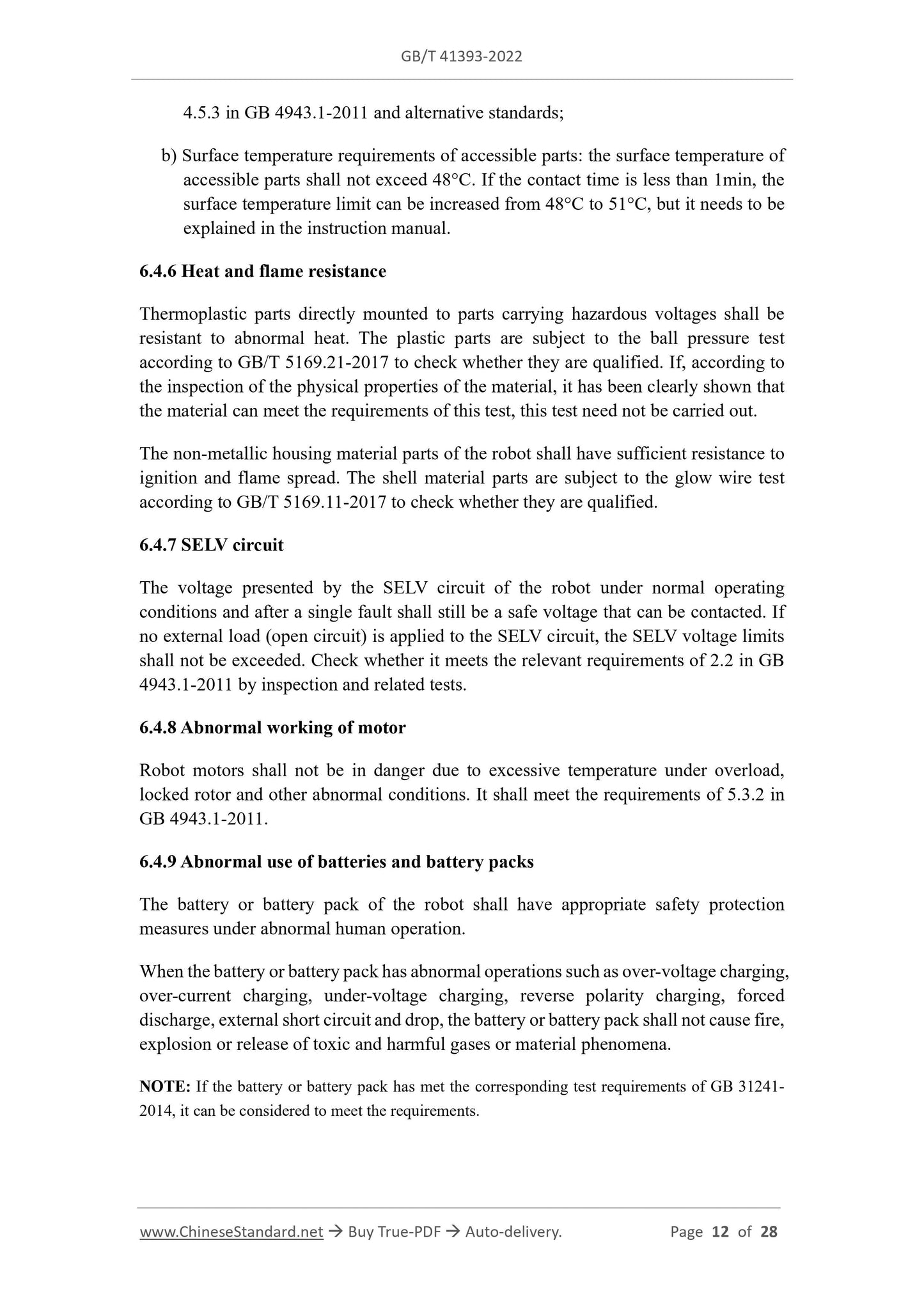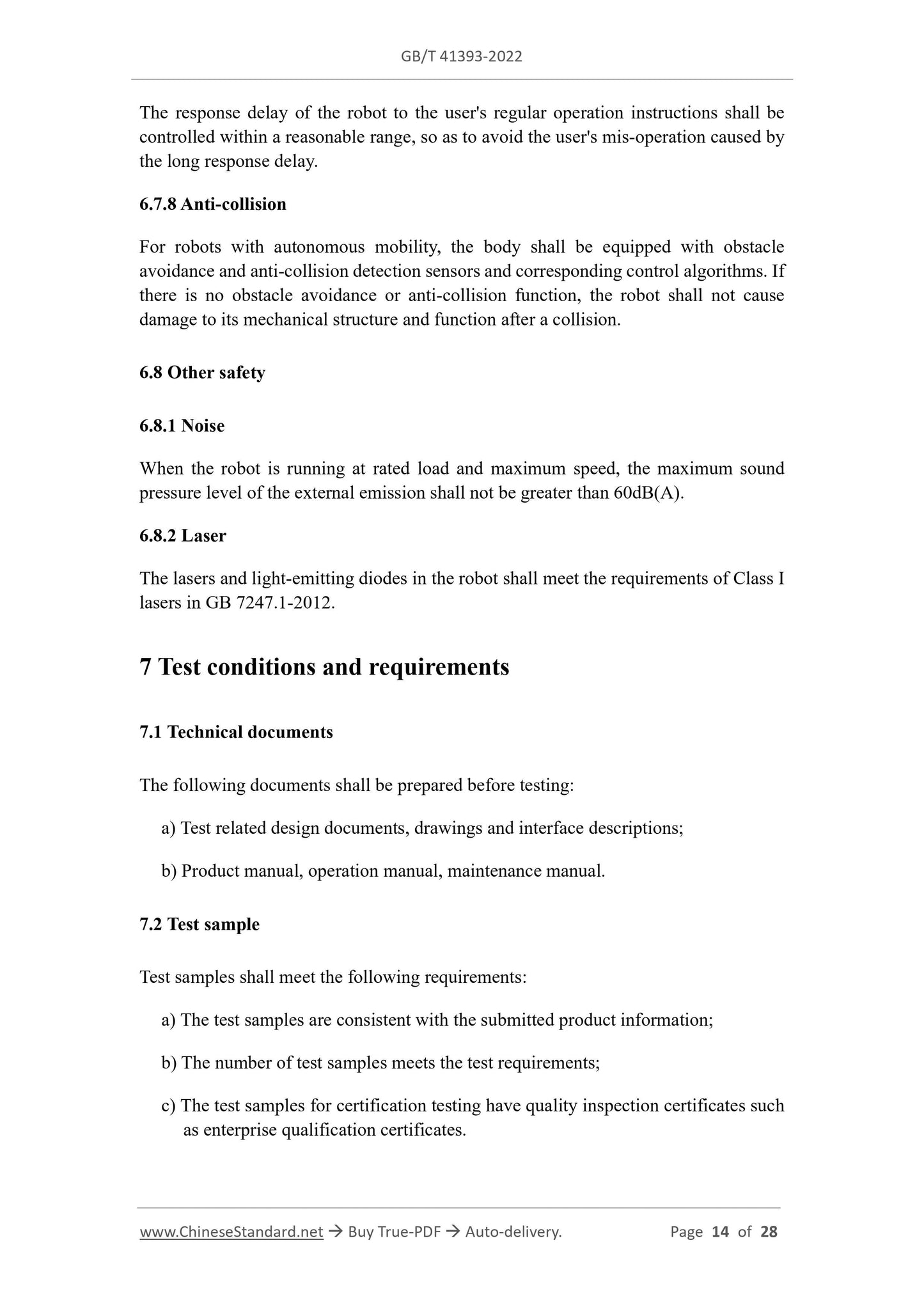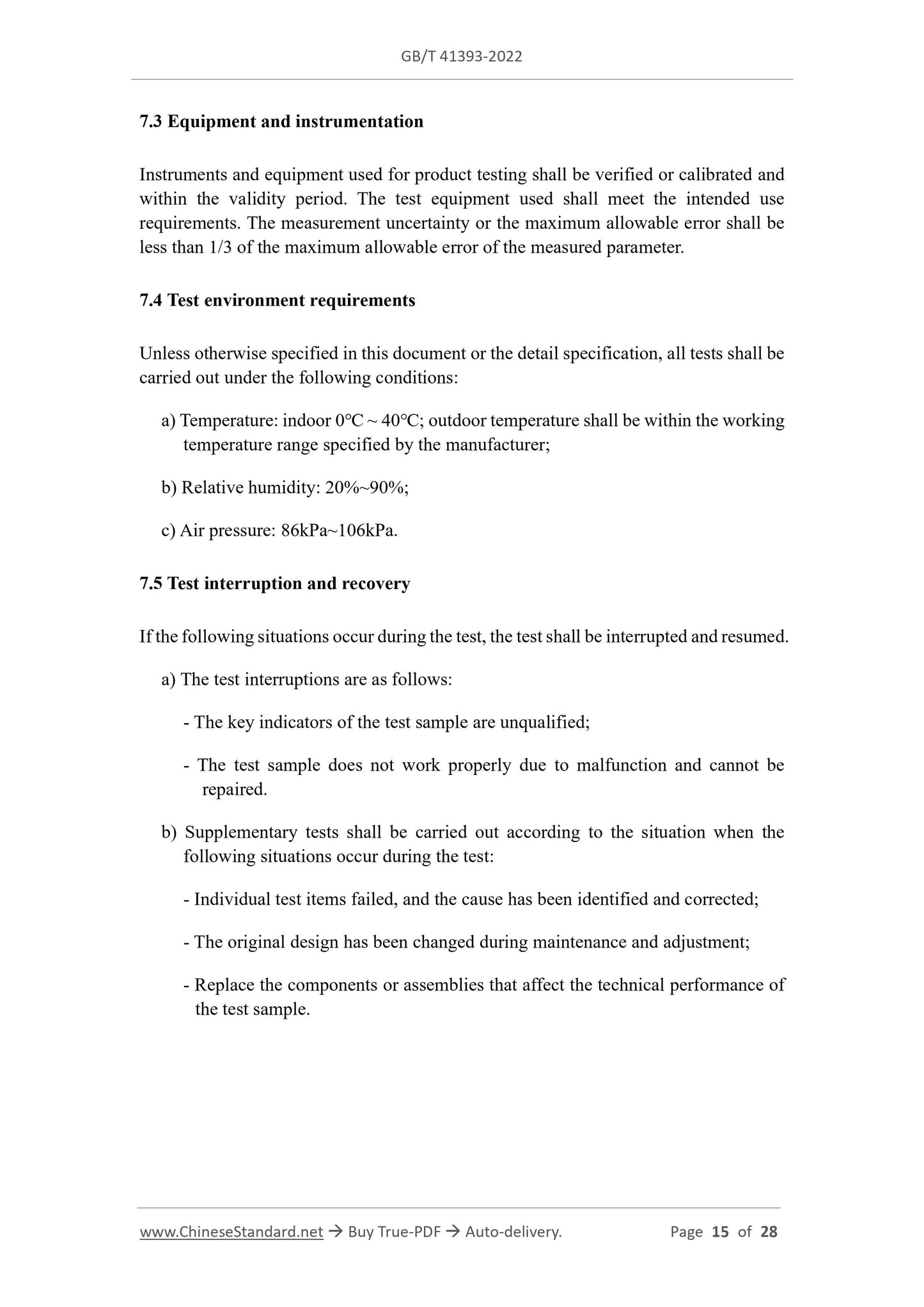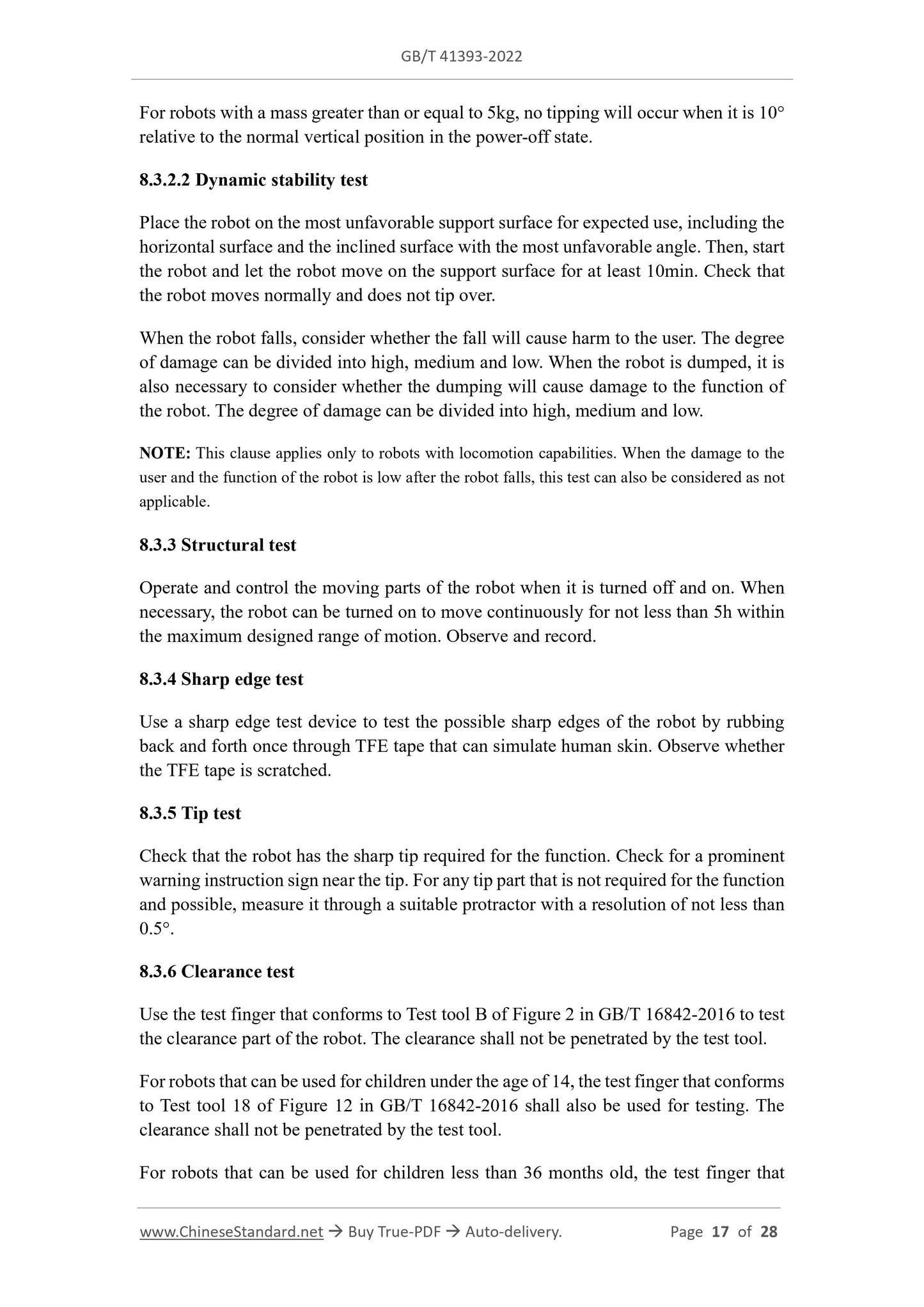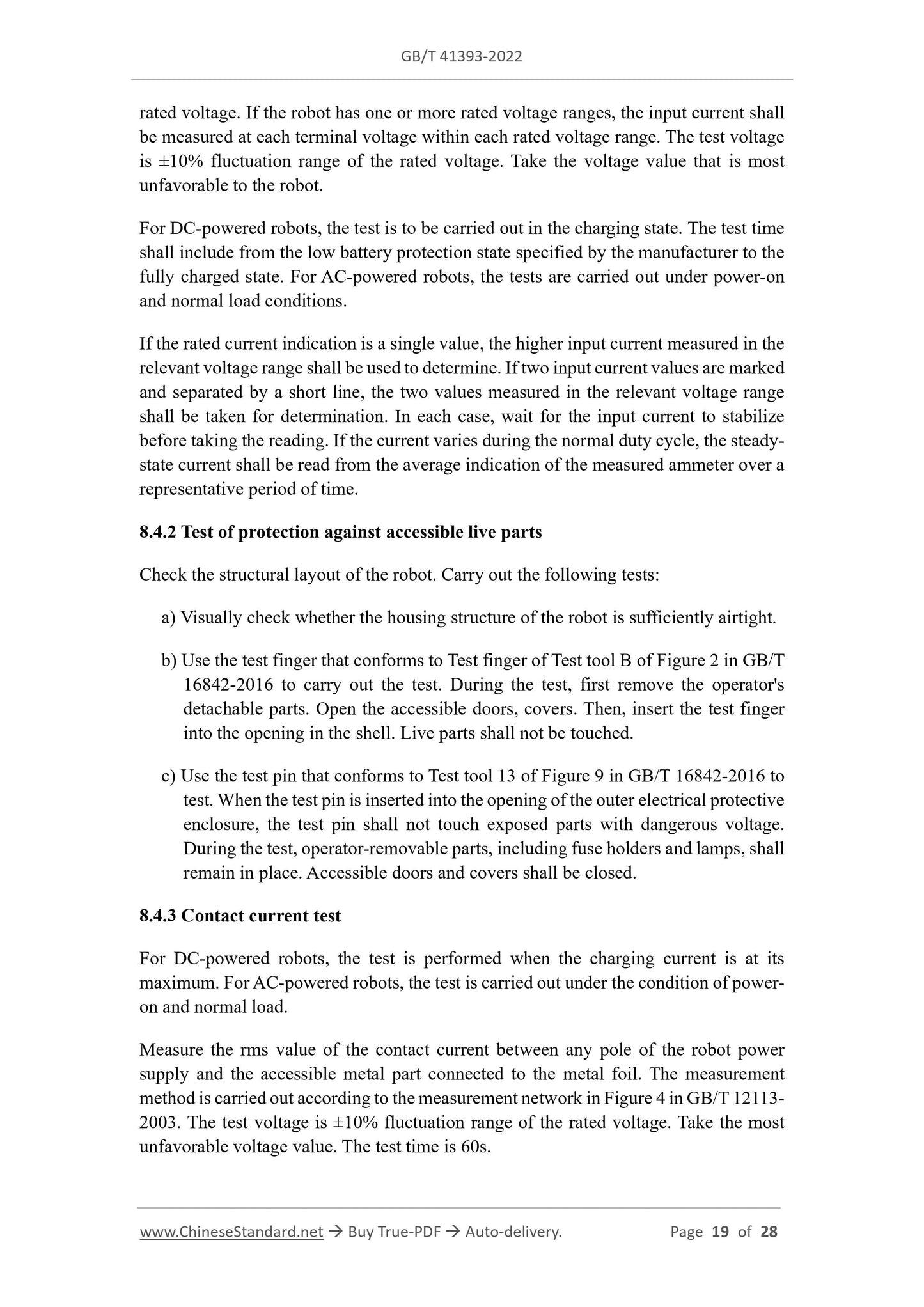1
/
of
12
www.ChineseStandard.us -- Field Test Asia Pte. Ltd.
GB/T 41393-2022 English PDF (GB/T41393-2022)
GB/T 41393-2022 English PDF (GB/T41393-2022)
Regular price
$290.00
Regular price
Sale price
$290.00
Unit price
/
per
Shipping calculated at checkout.
Couldn't load pickup availability
GB/T 41393-2022: Entertainment robots - Safety requirements and testing methods
Delivery: 9 seconds. Download (and Email) true-PDF + Invoice.Get Quotation: Click GB/T 41393-2022 (Self-service in 1-minute)
Newer / historical versions: GB/T 41393-2022
Preview True-PDF
Scope
This Standard specifies general principles of safety design, hazard identification andrisk assessment, safety requirements, test conditions and requirements, test methods
and safety marks, signs and descriptions for entertainment robots.
This Standard applies to the design, production, testing and maintenance of
entertainment robots.
This Standard does not apply to large recreational facilities that come in contact with
people.
Basic Data
| Standard ID | GB/T 41393-2022 (GB/T41393-2022) |
| Description (Translated English) | Entertainment robots - Safety requirements and testing methods |
| Sector / Industry | National Standard (Recommended) |
| Classification of Chinese Standard | J28 |
| Word Count Estimation | 18,123 |
| Issuing agency(ies) | State Administration for Market Regulation, China National Standardization Administration |
Share
